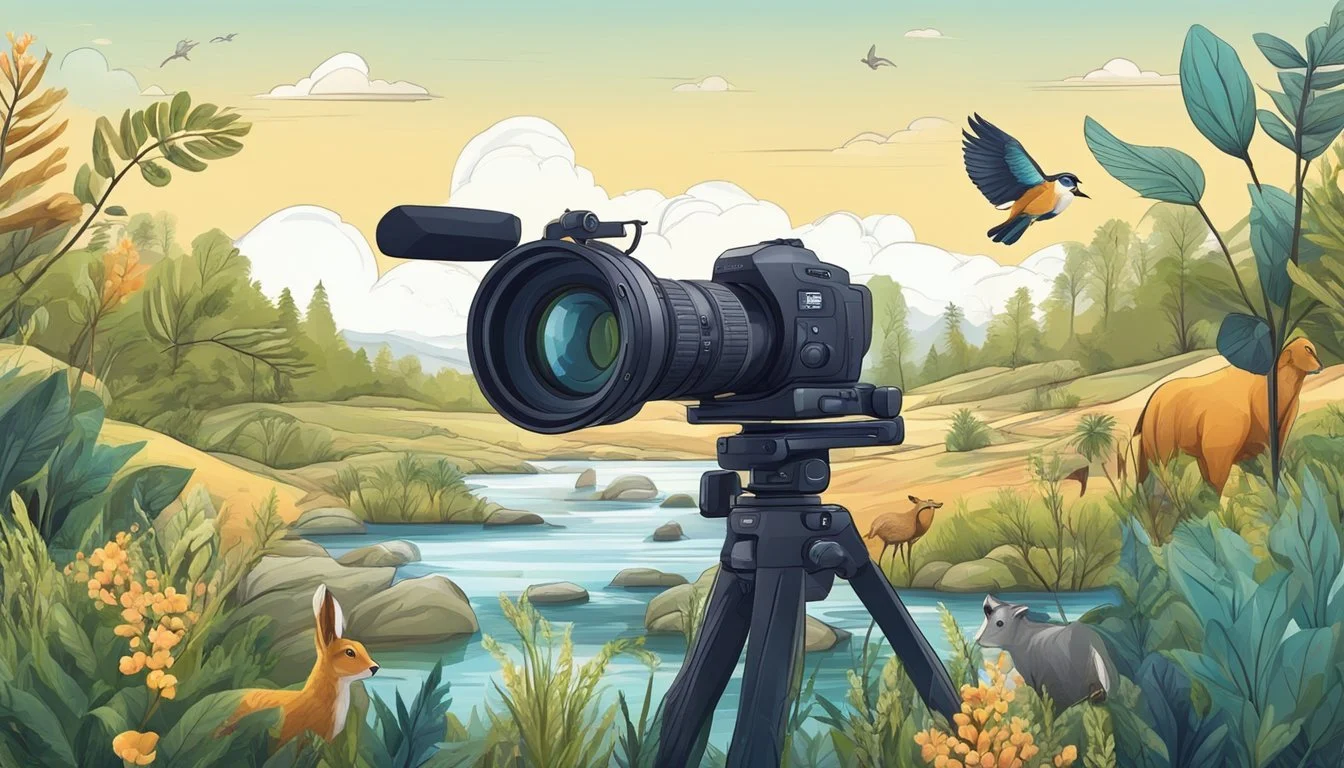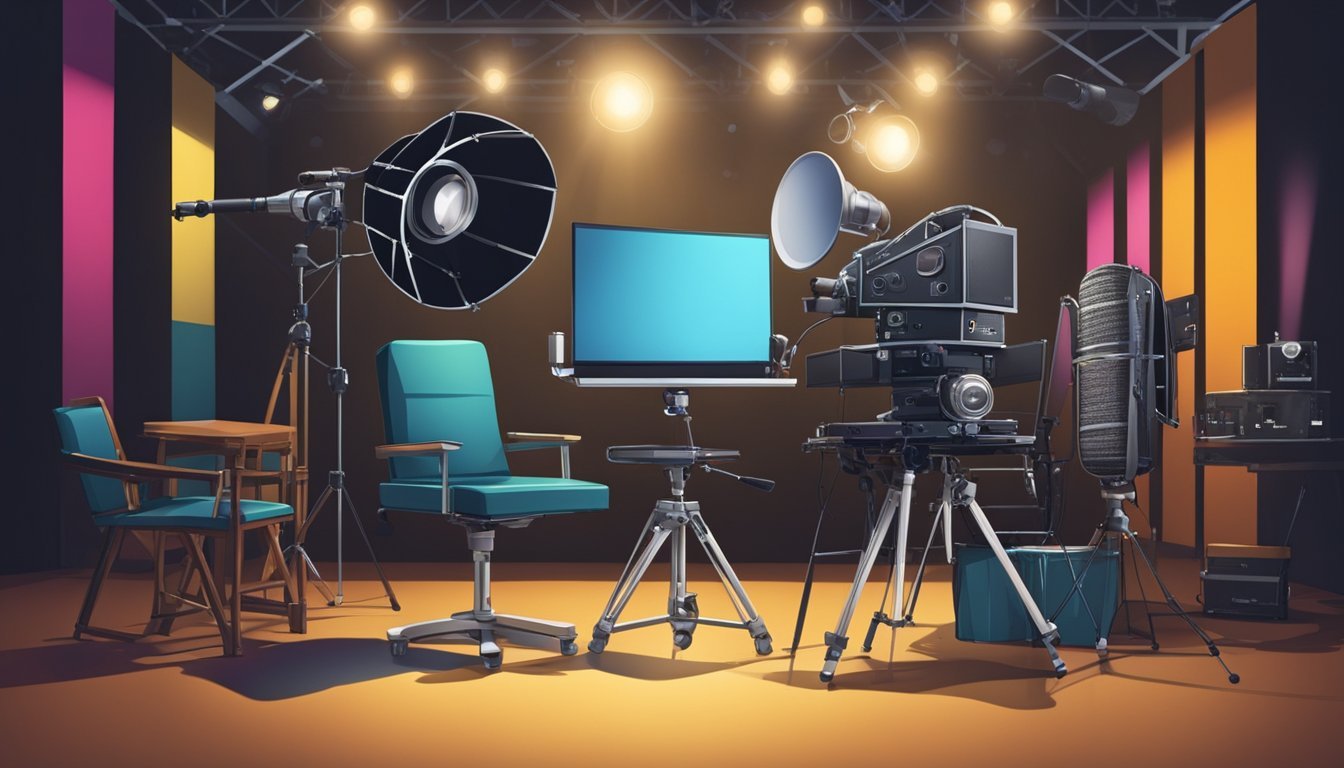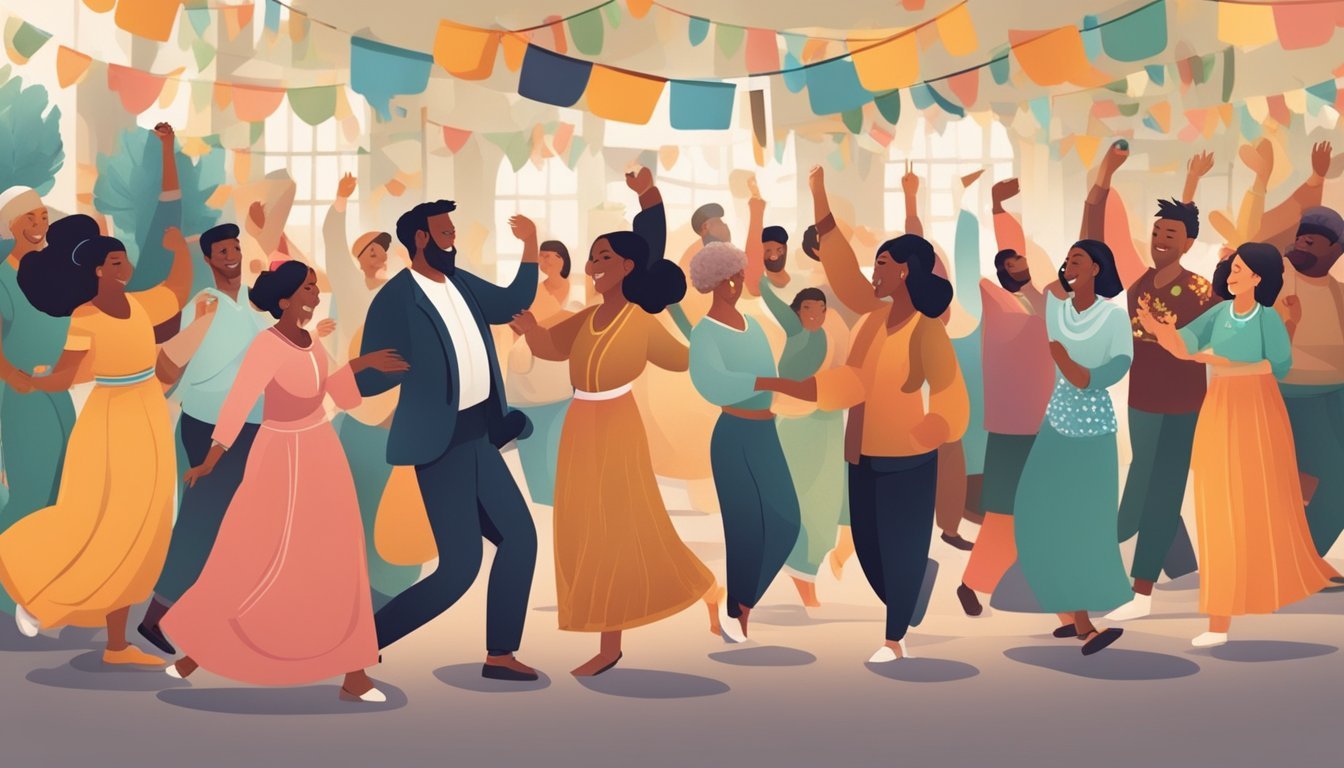Shocking Truth Revealed: The Hidden Power of Documentaries Exposed!
Documentaries are films or television programs that present factual information about real events, people, or subjects. They aim to educate, inform, and sometimes persuade viewers on various topics. A documentary is defined as a non-fictional work that uses actual footage, interviews, and other authentic materials to document reality.
Documentaries often explore historical events, social issues, scientific discoveries, or cultural phenomena. They can range from serious investigative pieces to lighthearted explorations of everyday life. Filmmakers use various techniques to craft compelling narratives while adhering to the principles of truthful representation.
These productions play a vital role in shaping public understanding and discourse. By presenting real-world stories and evidence, documentaries can shed light on important issues, challenge perspectives, and inspire action. Their impact extends beyond entertainment, making them valuable tools for education, journalism, and social change.
Defining Documentary
Documentaries are non-fiction films that aim to present factual information about real people, events, or issues. They use various techniques to capture and convey reality while distinguishing themselves from fictional narratives.
Core Characteristics
Documentary films focus on real subjects and events. They rely on documentary evidence like interviews, archival footage, and on-location filming. Authenticity is key, with documentarians striving to represent their subjects accurately.
Documentaries often have educational or informative goals. They may seek to raise awareness, explore complex topics, or shed light on hidden truths. Many documentaries also incorporate a point of view or argument.
Sound design and music play important roles in documentaries. Narration, ambient audio, and carefully selected music help shape the viewer's understanding and emotional response.
Differentiating from Fiction Films
Unlike fiction films, documentaries do not use actors to portray characters. They feature real people in real situations. Documentaries typically avoid scripted dialogue, focusing instead on spontaneous interactions and authentic moments.
Documentary cinematography often employs handheld cameras and natural lighting to capture events as they unfold. This contrasts with the controlled setups common in fiction filmmaking.
Editing in documentaries aims to present information clearly and build coherent narratives from real footage. Fiction films, by contrast, construct artificial realities through careful scene arrangement.
Genres and Styles
Documentaries span diverse genres and styles:
Observational: Minimal intervention, fly-on-the-wall approach
Expository: Informative, often using voice-over narration
Participatory: Filmmaker actively engages with subjects
Reflexive: Draws attention to the filmmaking process itself
Performative: Emphasizes subjective experiences and emotions
Some documentaries blend styles or incorporate fictional elements while maintaining a factual core. Docudramas, for instance, use reenactments to depict historical events.
Emerging technologies like virtual reality are expanding documentary possibilities, offering immersive experiences that place viewers directly in real-world scenarios.
Historical Development
Documentary filmmaking has evolved significantly since its inception, shaping how we understand and interpret real-world events. This evolution spans from early experiments to modern digital productions, reflecting technological advancements and changing societal perspectives.
Early Beginnings
The roots of documentary film trace back to the late 19th century. In 1895, the Lumière brothers captured everyday scenes like workers leaving a factory, laying the groundwork for actuality films. These short, unedited clips of real-life events marked the birth of non-fiction filmmaking.
Robert Flaherty's "Nanook of the North" (1922) is often considered the first feature-length documentary. It combined staged scenes with authentic footage of Inuit life, establishing a new approach to factual storytelling.
John Grierson coined the term "documentary" in the 1920s, defining it as the "creative treatment of actuality." This concept expanded the genre beyond mere recording, allowing for artistic interpretation of real events.
Documentary Through the Decades
The 1930s saw the rise of politically motivated documentaries. Leni Riefenstahl's "Triumph of the Will" (1935) showcased propaganda's power, while the "Why We Fight" series (1942-1945) rallied American support during World War II.
In the 1960s, Direct Cinema and Cinéma Vérité movements emerged. Filmmakers like Frederick Wiseman and D.A. Pennebaker used lightweight cameras to capture unscripted moments, aiming for a more authentic representation of reality.
The 1970s and 1980s brought personal documentaries to the forefront. Films like "Sherman's March" (1986) blended autobiography with social commentary, expanding the genre's emotional range and storytelling potential.
Technological Advancements
The advent of digital cameras in the 1990s democratized documentary filmmaking. Lower production costs and easier editing allowed for a wider range of voices and subjects to be explored.
High-definition video and improved sound recording equipment enhanced the visual and audio quality of documentaries, creating more immersive viewing experiences.
Streaming platforms have revolutionized distribution, making documentaries more accessible to global audiences. This has led to a surge in production and popularity of non-fiction content, from feature-length films to episodic series.
Virtual reality and 360-degree video are now pushing the boundaries of documentary storytelling, offering viewers unprecedented levels of immersion and interactivity.
Production Elements
Documentary production involves several key components that bring real-life stories to the screen. These elements work together to create an engaging and informative viewing experience.
Interviews and Narration
Interviews form the backbone of many documentaries. Documentary filmmakers often sit down with subjects to capture firsthand accounts and expert opinions. These interviews provide authentic voices and personal perspectives on the topic at hand.
Narration guides viewers through the documentary's narrative. A skilled narrator can contextualize information and bridge different segments of the film. Some documentaries use the filmmaker's voice, while others employ professional voice actors or even celebrities to lend gravitas to the subject matter.
Careful editing of interviews and narration helps maintain the documentary's pacing and narrative flow. Filmmakers may intercut interview segments with other footage to illustrate points or create emotional resonance.
Re-enactments and Archival Footage
Re-enactments bring historical events or personal anecdotes to life when no original footage exists. Actors portray real people and events, helping viewers visualize past occurrences or private moments.
Archival footage provides a window into the past. Old news reels, home movies, and photographs add authenticity and historical context to documentaries. This material can be particularly powerful when exploring a subject's life story or documenting historical events.
Filmmakers must balance the use of re-enactments and archival material to maintain credibility while keeping audiences engaged. Overreliance on re-enactments may compromise a documentary's perceived authenticity.
Cinematography and Sound
Cinematography in documentaries captures real-world settings and events. Camera techniques like handheld shots can create an immediate, raw feel, while carefully composed static shots may emphasize the beauty of a landscape or the gravity of a situation.
Lighting plays a crucial role in setting mood and tone. Natural light often prevails in documentary filmmaking, but artificial lighting may be used to enhance interviews or low-light situations.
Sound design encompasses both recorded audio and added elements. Ambient sounds can immerse viewers in a location, while music can evoke emotions and underscore key moments. Sound mixing ensures that interviews, narration, and environmental audio blend seamlessly.
Ethics and Representation
Documentary filmmaking involves complex ethical considerations regarding how subjects and events are portrayed. Filmmakers must navigate issues of truthfulness, consent, and social responsibility while striving to create compelling narratives.
Subjectivity vs. Objectivity
Documentaries aim to present real events and people, but pure objectivity is challenging to achieve. Filmmakers make subjective choices in framing, editing, and storytelling. The selection of footage, interview subjects, and narrative structure all shape the final product.
While striving for accuracy, documentarians acknowledge their own perspectives. They often disclose their methods and potential biases to viewers. Some embrace a more subjective approach, clearly presenting their point of view on a topic.
Balancing factual presentation with creative storytelling requires careful consideration. Filmmakers must decide how to represent complex realities within the constraints of the medium.
Ethical Filmmaking
Responsible documentarians follow ethical guidelines to ensure fair representation of subjects. Obtaining informed consent is crucial, especially when filming vulnerable individuals or sensitive topics. Filmmakers should explain potential impacts of participation.
Accurate portrayal of events and people is a core principle. This involves fact-checking, using verified sources, and avoiding misleading editing techniques. Documentarians strive to present multiple perspectives on issues when relevant.
Respecting subjects' dignity and cultural contexts is essential. Filmmakers consider how their work might affect individuals or communities depicted. They aim to avoid reinforcing harmful stereotypes or exploiting participants for dramatic effect.
Transparency about methods, funding sources, and potential conflicts of interest helps maintain credibility. Ethical documentarians prioritize honesty and integrity throughout the filmmaking process.
Cultural and Social Impact
Documentaries shape public opinion, educate audiences, and drive social change through compelling storytelling. Their influence extends beyond entertainment, serving as powerful tools for raising awareness and inspiring action on important issues.
Influence on Society
Documentaries provoke thought and challenge existing beliefs. They expose viewers to new perspectives, cultures, and ideas, fostering empathy and understanding. By presenting real-world stories and issues, documentaries can shift societal attitudes and spark conversations on important topics.
Films like "An Inconvenient Truth" brought climate change to the forefront of public discourse. Others, such as "The Social Dilemma," have influenced how people view technology and social media.
Documentaries also preserve historical events and cultural traditions for future generations, contributing to collective memory and identity.
Educational Purpose
Documentaries serve as valuable educational resources, complementing traditional learning methods. They bring complex subjects to life through visual storytelling, making information more accessible and engaging.
Schools and universities frequently use documentaries to supplement curricula across various disciplines. Films on historical events, scientific discoveries, or social issues provide context and depth to classroom discussions.
Educational documentaries can:
Simplify complex topics
Showcase real-world applications of concepts
Inspire curiosity and further research
Provide diverse perspectives on subjects
Role in Activism
Documentaries play a crucial role in social activism and advocacy. They shed light on injustices, human rights violations, and environmental issues, often catalyzing public support for causes.
Filmmakers use their craft to:
Expose corruption or wrongdoing
Amplify marginalized voices
Mobilize grassroots movements
Notable examples include "Blackfish," which led to changes in SeaWorld's orca program, and "The Cove," which raised awareness about dolphin hunting practices.
Documentaries can also influence policy decisions by educating policymakers and the public on pressing issues. They serve as powerful tools for NGOs and activists to communicate their messages and garner support.
Modern Documentary Landscape
The documentary genre has undergone significant transformations in recent years. New technologies and platforms have reshaped how documentaries are produced, distributed, and consumed.
Streaming Services and Accessibility
Streaming platforms like Netflix, Hulu, and Amazon Prime have revolutionized documentary distribution. These services offer a vast library of documentaries, making them easily accessible to global audiences. The increased availability has led to a surge in documentary viewership.
Many streaming services now produce their own original documentaries. This has created new opportunities for filmmakers and expanded the range of topics covered. Series formats have gained popularity, allowing for in-depth exploration of complex subjects.
The rise of mobile devices has also changed how people watch documentaries. Viewers can now access content on-the-go, leading to the creation of shorter, more digestible documentary formats.
Global Perspectives
Modern documentaries increasingly showcase diverse global perspectives. Filmmakers from various countries and cultures are gaining platforms to share their stories with international audiences.
This trend has led to a richer, more nuanced understanding of global issues. Documentaries now often explore topics from multiple angles, challenging viewers to consider different viewpoints.
Collaborative international productions have become more common. These projects bring together talent and resources from different countries, resulting in documentaries with broader scope and appeal.
Social media has played a crucial role in promoting global documentaries. Platforms like YouTube and Vimeo allow filmmakers to reach audiences directly, bypassing traditional distribution channels.
The Future of Documentaries
Documentary filmmaking continues to evolve rapidly, embracing new technologies and storytelling techniques. The genre is poised for significant transformation in the coming years, reshaping how factual material is presented and consumed.
Emerging Trends
Biographical documentaries are gaining popularity, offering intimate portraits of notable figures. These films often blend archival footage with reenactments, providing viewers with a more immersive experience.
Interactive elements are becoming more common, allowing audiences to engage directly with the content. This approach transforms passive viewing into an active exploration of documentary life.
Short-form documentaries optimized for social media platforms are on the rise. These bite-sized films cater to shorter attention spans while still delivering impactful messages.
Technological Innovations
Virtual and augmented reality technologies are revolutionizing documentary storytelling. Viewers can now step into recreated historical environments or experience events from multiple perspectives.
Artificial intelligence is streamlining research processes and uncovering new insights. AI-assisted editing tools are helping filmmakers craft more compelling narratives from vast amounts of footage.
Advanced drone technology is enabling breathtaking aerial cinematography, adding visual spectacle to documentaries about nature, architecture, and urban landscapes.
Potential New Formats
Hybrid documentaries that blend factual material with fictional elements are emerging as a unique storytelling format. These films challenge traditional boundaries between genres.
Episodic documentary series are becoming more prevalent on streaming platforms. This format allows for deeper exploration of complex topics over multiple installments.
Interactive online platforms are enabling viewers to choose their own paths through documentary content. This non-linear approach offers personalized viewing experiences tailored to individual interests.




